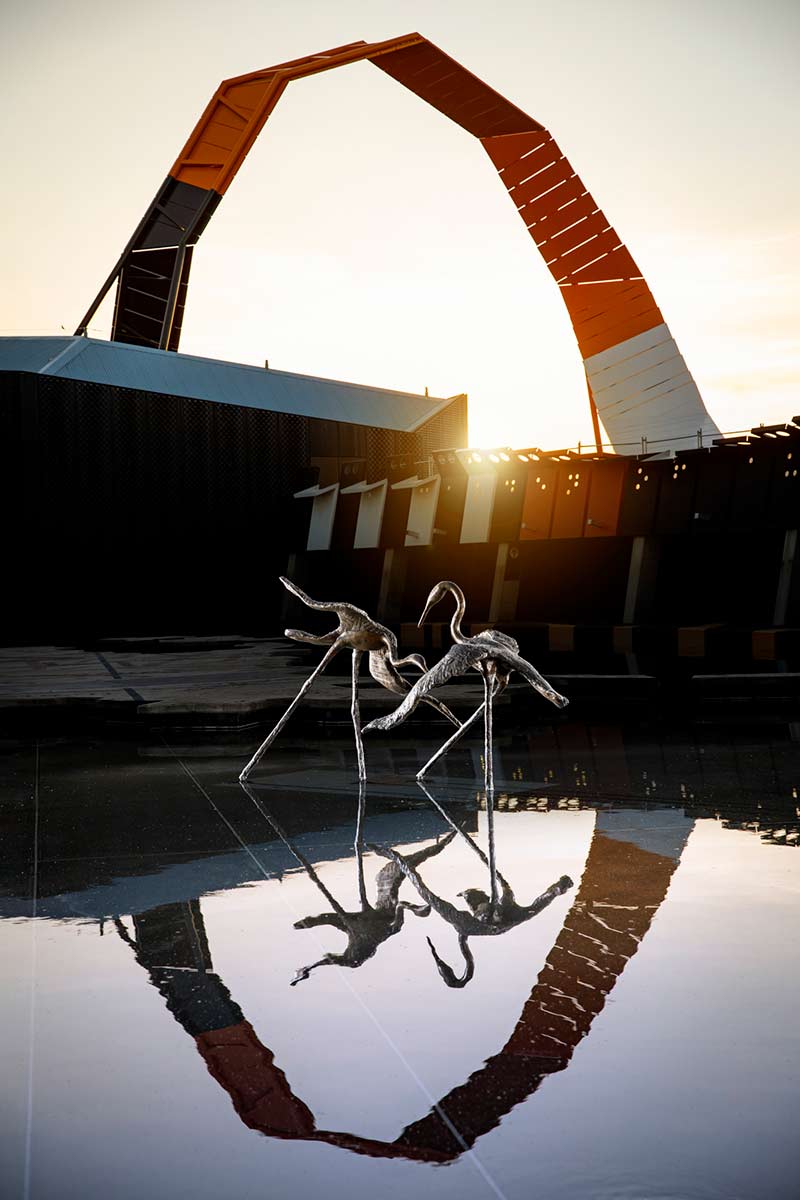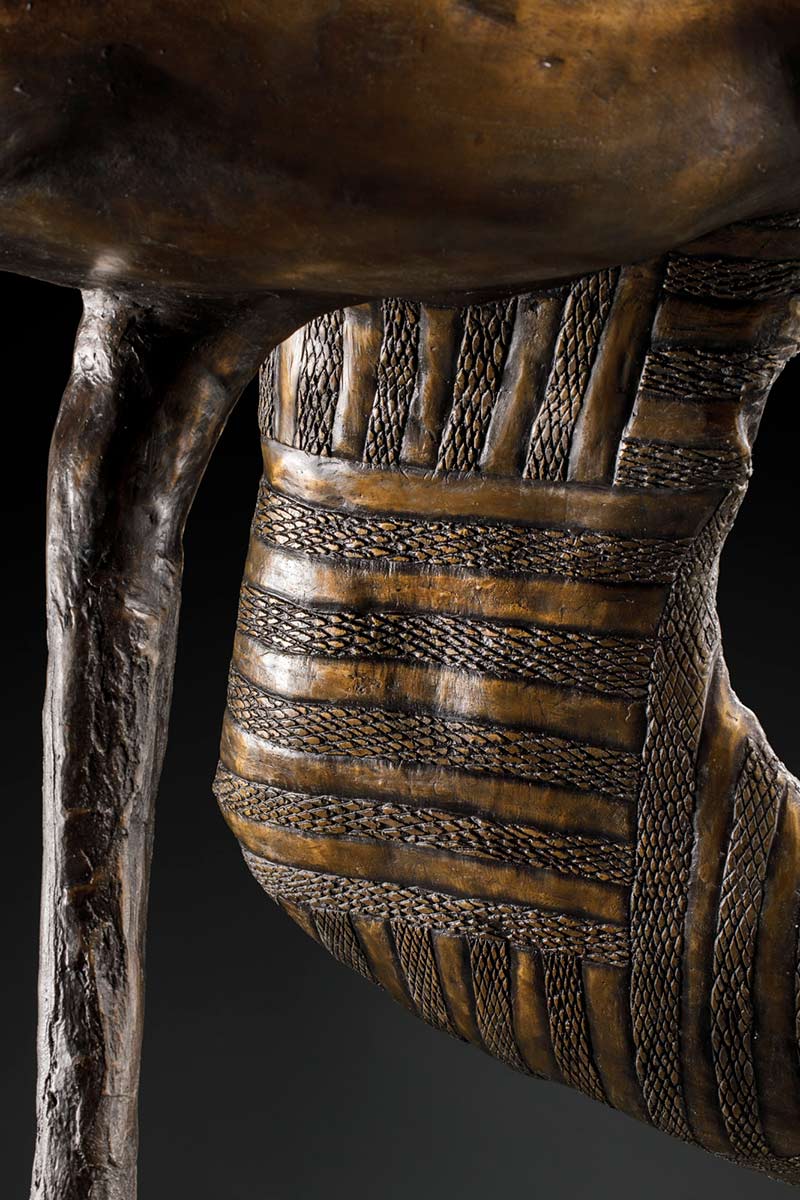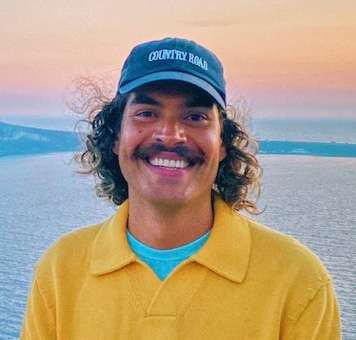The National Museum of Australia has been gifted an exquisite bronze sculpture of two dancing gurdurrku (brolga) which stand gracefully in a pool of water in the Garden of Australian Dreams.
The sculpture was generously donated to the Museum by Wayne and Vicki McGeoch through the Australian Government’s Cultural Gifts Program.

Djan’kawu
The two brolgas tell a story of the Djan’kawu from the Yolngu people in north-east Arnhem Land. The Djang’kawu were two sisters who travelled in a bark canoe to the coast of Arnhem Land from Burralku, an island in the east.
Walking across the land, they followed the course of the sun, walking beneath it from sunrise to sunset. They carried walking sticks and everywhere their sticks touched the ground a waterhole was made. They named everything they saw – animals, plants, mountains, trees and people.
The Djang’kawu gave birth to the first people of Arnhem Land. They gifted the people their songs and dances. They grew trees along their journey by planting their sacred objects. Following the sun, their journey took them to the west, before travelling out of Yolngu country.
The story of the Djang’kawu is ancient and revered.

Gunybi Ganambarr
The brolga sculpture was produced by Gunybi Ganambarr at the Buku-Larrnggay Mulka Centre in Yirrkala over three separate visits in 2010, 2011 and 2012, in collaboration with Sydney moldmaker Kassandra Bossell. The bronze sculpture of the mould was cast at Crawford's foundry in Sydney. Gunybi is a ceremonial leader of the Dhuwa moiety. He tells his ancestral story by fusing Western and Indigenous traditions to create this innovative sculpture. The underside of the brolgas’ wings are incised and crosshatched with Yolngu designs.
Sculpture
The work was previously exhibited in the July 2013 exhibition, Found, at the Annandale Galleries in Sydney which featured works made from recycled materials.
The brolgas are now permanently on display in the Garden of Australian Dreams at the National Museum of Australia. Come in and admire them!
